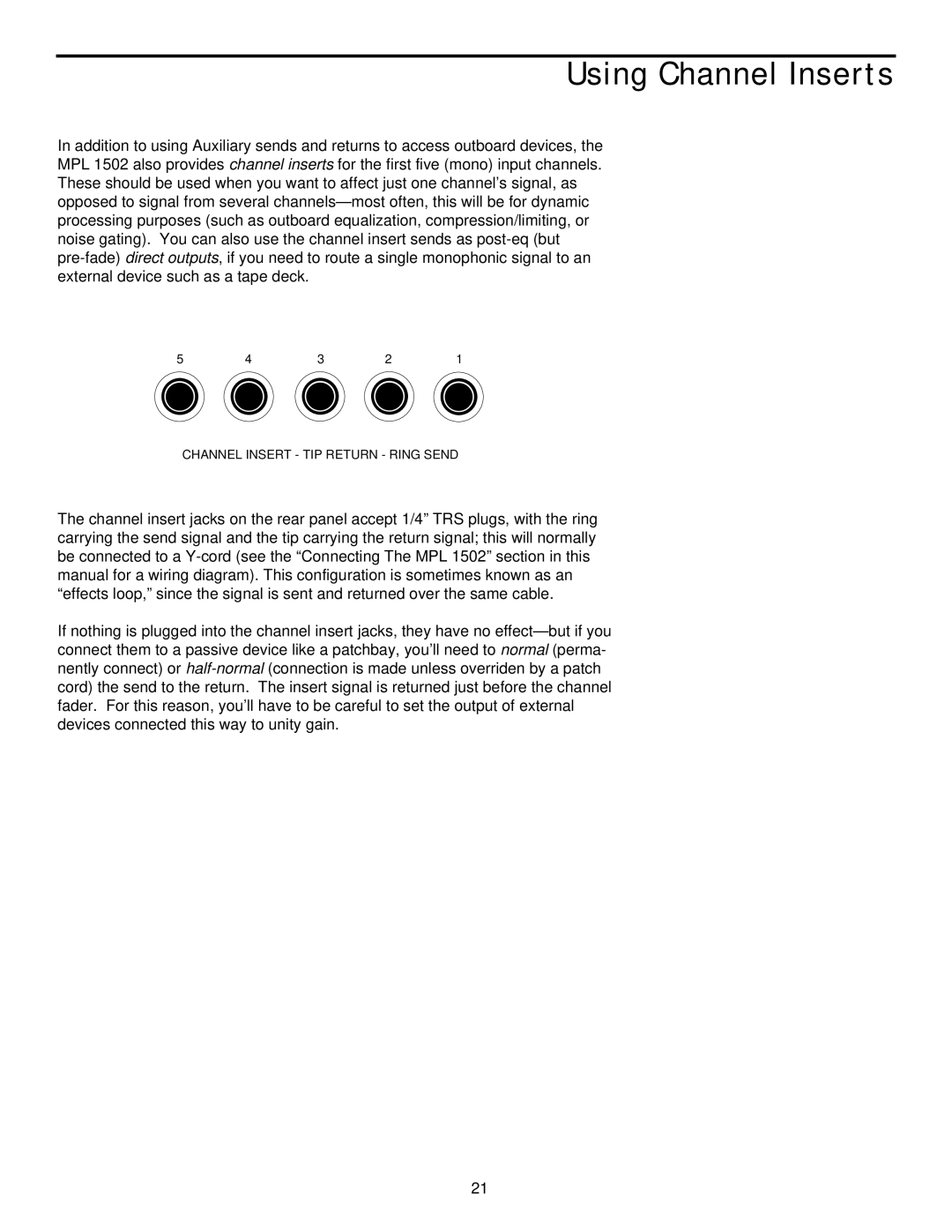
Using Channel Inserts
In addition to using Auxiliary sends and returns to access outboard devices, the MPL 1502 also provides channel inserts for the first five (mono) input channels. These should be used when you want to affect just one channel’s signal, as opposed to signal from several channels— most often, this will be for dynamic processing purposes (such as outboard equalization, compression/limiting, or noise gating). You can also use the channel insert sends as
5 | 4 | 3 | 2 | 1 |
CHANNEL INSERT - TIP RETURN - RING SEND
The channel insert jacks on the rear panel accept 1/4” TRS plugs, with the ring carrying the send signal and the tip carrying the return signal; this will normally be connected to a
If nothing is plugged into the channel insert jacks, they have no effect— but if you connect them to a passive device like a patchbay, you’ll need to normal (perma- nently connect) or
21
